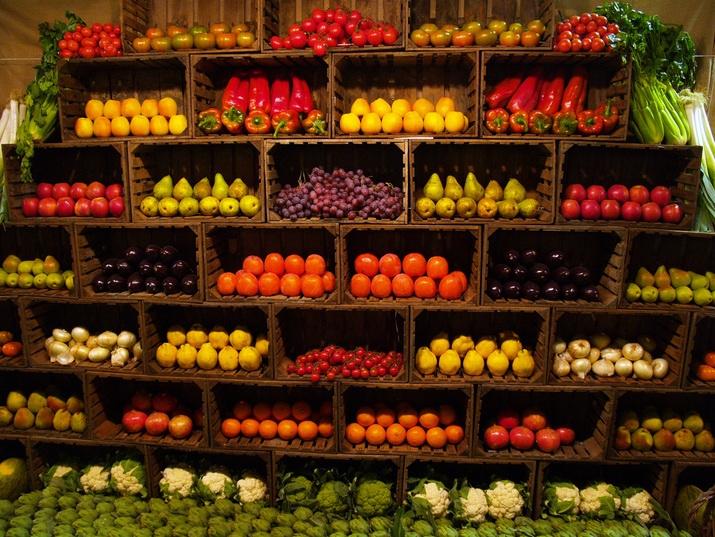|
Blue, Purple & Deep Red
Blue, purple and deep-red fruits and vegetables are full of anthocyanins and proanthocyanins, antioxidants associated with keeping the heart healthy and the brain functioning optimally, reducing inflammation and preventing cancer.
Green, part 1 (cruciferous) Cruciferous vegetables, such as broccoli and kale, provide compounds called indoles and isothiocyanates, which may help prevent cancer by amping up the production of enzymes that clear toxins from the body. In addition, sulforaphane, a phytochemical present in cruciferous vegetables, was found to detoxify cancer-causing chemicals before they do damage to the body.
Yellow & Green, part 2 (leafy greens) Many yellow and green vegetables are good sources of Lutein and Zeaxanthin, phytochemicals that accumulate in the eyes and help prevent age-related macular degeneration, a leading cause of blindness in older people. Leafy greens are also rich in beta carotene. CHLOROPHYLL colors green fruits and vegetables. In our system, the green foods represented those foods rich in isothiocyanates, which induce enzymes in the liver that assist the body in removing potentially carcinogenic compounds. Cruciferous veggies such as broccoli and cabbage contain the phytochemicals indoles and isothiocyanates, which may have anticancer properties. Green vegetables are excellent sources of vitamin K, folic acid, potassium, as well as carotenoids and omega-3 fatty acids. Folic acid is needed to prevent neural tube defects during pregnancy, and vitamin K is essential in blood clot formation. Diets high in potassium are associated with lowering blood pressure, and there is an inverse relationship between cruciferous vegetables and cancer, especially colon and bladder cancers.
Orange Alpha and beta carotene make foods like carrots and sweet potatoes so brilliantly orange. The body converts these compounds into the active form of vitamin A, which helps keep your eyes, bones and immune system healthy. These phytochemicals also operate as antioxidants, sweeping up disease-promoting free radicals. Orange fruits and vegetables may also play a part in preventing cancer, particularly of the lung, esophagus, and stomach.
Red Red foods, such as tomatoes and watermelon, contain Lycopene, a phytochemical that may help protect against prostate and breast cancers. Vitamin C and Folic Acid, red fruits and vegetables are also sources of flavonoids, which reduce inflammation and have antioxidant properties. Cranberries, another red fruit [whose color is due to anthocyanins, not lycopene], are also a good source of tannins, which prevent bacteria from attaching to cells.
0 Comments
Your comment will be posted after it is approved.
Leave a Reply. |
Archives
May 2022
|

 RSS Feed
RSS Feed